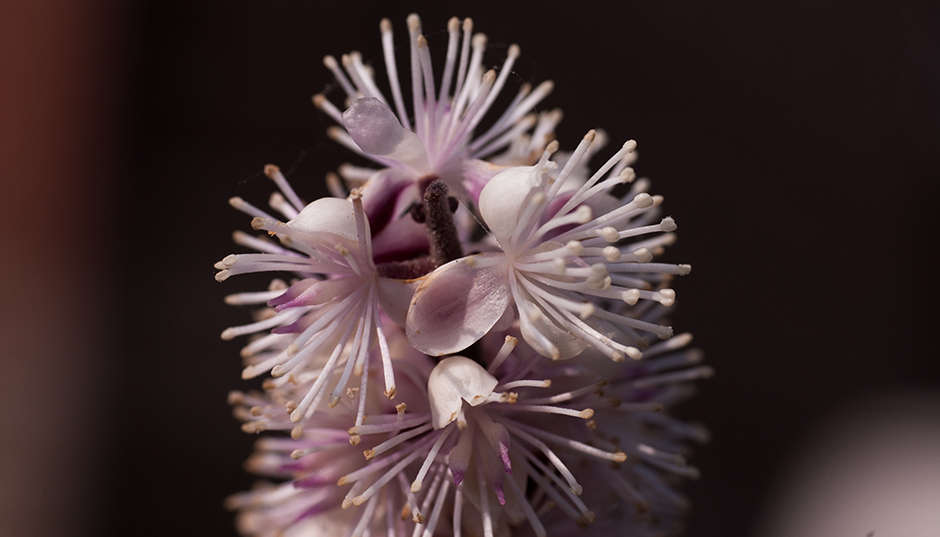A member of the buttercup family, Black Cohosh is an herbaceous perennial which grows to a height of 2 to 4 meters and thrives in moist shady environments. It has beautiful long stalks of small, white, feathery flowers, and is often seen in gardens.
Cohosh is a Native American word that means rough knobbly roots and it is the roots and rhizomes that have beneficial properties. In autumn, when the leaves on the plant start to die, the dark brown root is harvested, cleaned, and dried. It can then either be powdered or prepared into a tincture and used for medicinal purposes.
Common Name: Black Cohosh
Botanical Name: Actaea racemosa (previously called Cimicifuga racemosa)
Other Names: Bugbane, Black Snakeroot, Squawroot, Papoose Root, Fairy Candles
Growing area: Native to Eastern North America
Nutrients & Applications:
Black Cohosh contains triterpene glycosides which are sugar compounds and isoferulic acids which are substances with anti-inflammatory effects. One of the isoferulic acids found in Black Cohosh is salicylic acid which is the base for the active ingredient in aspirin. Black Cohosh is also a source of vitamin A and vitamin B5.
Traditionally, Native Americans made use of the plant juice and rhizome.The juice was used to repel insects and to treat rattlesnake bites.The rhizomes were boiled in water and the resulting infusion was drunk in order to treat sore throats, coughs and other pulmonary conditions, diarrhoea, general weakness, arthritis, irregular menstruation, and as an aid in childbirth.
European settlers to North America learned how to use Black Cohosh from the Native Americans,and settlers also used it to treat serious infectious diseases like small pox, scarlet fever and whooping cough.In the 19th century, Lydia Pinkham, an early pioneer for women’s health, used Black Cohosh in her “Vegetable Compound” formula which was used to treat “female weakness” (menstrual discomforts) or “female hysteria” (menstrual complaints). By the 18th and 19th centuries the early European settlers to America had brought Black Cohosh to Europe where it is still used today.
There is a strong body of clinical research supporting the use of Black Cohosh for easing both the physical and psychological transitions that can accompany menopause. Recent research on Black Cohosh’s mechanism of action suggests that the plant works by normalizing levels of luteinizing hormone (LH), not through estrogenic activity, as was originally thought.
Some health practitioners also use Black Cohosh to help relieve tinnitus and, because it acts as a mild stomach tonic,Black Cohosh can help improve the absorption of nutrients and the elimination of wastes via the digestive tract. Since Black Cohosh can dilate peripheral blood vessels and lower blood pressure it is useful in treating nerve and muscle pain. If you have menstrual cramps or an injury or arthritis then Black Cohosh can work as an antispasmodic to muscles, nerves, and blood vessels and as a muscle anti-inflammatory. Research also suggests that Black Cohosh has sedative effects supporting its use by Native American Indians for over two centuries to help improve sleep and mood.
